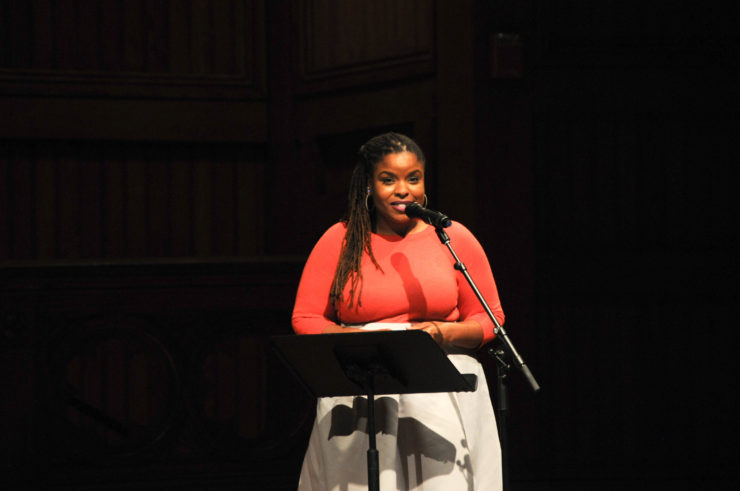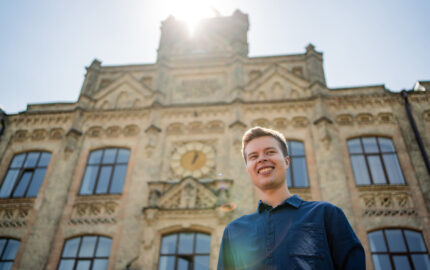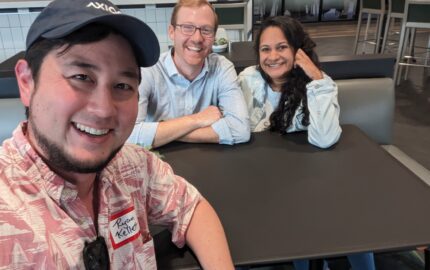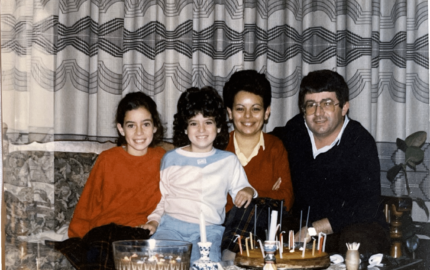I was barely a teenager. I didn’t have a sophisticated, refined eye and I knew little about how to judge composition, understand brushstrokes, or even evaluate the skills displayed in artwork.
But when I looked at Johnson’s painting, “Café,” it was easy to love. The reason was simple: the couple portrayed in his painting looked like people I knew. They looked like people who could be my relatives, neighbors.
Johnson’s work was the first time I saw an image of black people hanging in a respected museum. It is also the first time I remember seeing a celebration of ordinary, everyday black life in such a grand way. I started to hunger for more images and stories like it.
I didn’t exactly have Johnson’s work in mind when I started working as a freelance correspondent and intern for my hometown newspaper.
I was still a teenager, yet at the time, I was compelled by one mission: I wanted our local news to accurately depict our local black community. I wanted to see people, like my classmates and neighbors, have their stories told.
I remember strongly feeling that the only time I saw black people on the television news or even in the newspaper was because of tragic circumstances. I wasn’t alone: my classmates at my majority black high school, Austin-East in Knoxville, Tennessee, often agreed. As a result, we viewed the news and reporters with suspicion.
When we got the chance to meet the editor of the local paper, The Knoxville News-Sentinel, we asked him why the only time we saw reporters in our community was when something terrible occurred. He responded by offering us internships and welcoming our fresh story ideas.
I went to work and I remember having little competition from the senior, experienced reporters. It seemed like few of them had interest in covering the festivals, events in our community. I also felt that fewer wanted to examine the issues like poverty, joblessness, and the systemic inequality that affected our side of town.
During my year at Harvard, I’ve spent a lot of time reflecting on my personal mission as a journalist and how I have crafted a body of work devoted to presenting a more balanced and nuanced view of black life.
At Harvard, I studied under Henry Louis Gates Jr. and Sarah Lewis and I was reminded of the deliberate efforts of scholars, philosophers, and politicians that used both photographs and print media to essentially dehumanize African-Americans in order to justify slavery in the mid-1800s.
Sitting in African-American history courses, I reflected on the Kerner Commission report in the late 1960s that indicted the mainstream media for its failure to depict the fullness of black life and for overlooking the systemic failures affecting black people and highlighting solutions.
Adequately covering black life isn’t just about making sure we accurately record history—although that’s a significant reason.
It’s also important that we cover marginalized communities responsibly so that we don’t promote further isolation, disinvestment, and continue to perpetuate stereotypes.
This is true for the Latino community, the Muslim American community, the LGBTQ community, and so many other historically voiceless people. They deserve to have their stories told.
They deserve to see themselves in our news pages. Our industry can’t afford to make the same mistakes we have in the past.
I think there are consequences to journalism that empowers only one type of narrative. This reporting is used to justify heavy-handed policing, discrimination, and even policies that end up reinforcing inequity. One-sided reporting can devastate a minority community and stir feelings of resentment by othering one group of people.
It is also unjust for our audience. It fails to expose them to the beauty and brilliance of communities they may not understand or feel comfortable accessing on their own. They miss out on seeing and learning about people they should want to know.
I believe journalism must provide a bigger portrait of our communities and show the dimensions, the layers, and many aspects to the lives of our neighbors. Journalism should help people understand—because understanding helps to conquer fear and helps evoke compassion and empathy. Understanding leads us to sound policy decisions and so much more.
How do we do this? One way is to make sure our newsrooms reflect the communities that we cover. Even the Kerner Commission report pointed out that hiring one or two black reporters isn’t enough—news organizations have to do better when it comes to placing minorities in decision-making roles.
That advice was published in 1968. We still have a lot of work to do.
But this is why I often turn back to black artists like Johnson to find inspiration. I was reminded of this when I curated for my fellow Niemans a small show featuring these artists at the Harvard Art Museum.
When I reflect on Johnson and other black artists of his era, I am reminded that they labored to depict a community that wasn’t considered “valuable.” Mainstream collectors didn’t invest in images that portrayed black families. Too often, African-Americans couldn’t afford to buy the work.
Still these artists were committed to telling stories that were important. That’s all I’m trying to do.
Artists, like Elizabeth Catlett, Romare Bearden, and Henry Tanner, who are celebrated now, devoted their talents to capturing a community that was under-resourced, marginalized, and suffering the pain from racist policies and segregation.
Yet they created paintings, sculptures, photographs of residents that captured not just pain, but joy and striving and progress—the many dimensions of a people.
Those images are easy for me to embrace—they are people that look like the residents I live next to and go to church with.
This is the same thing I’ve tried to do with my own work, especially in Chicago.
It’s work that reminds our readers that communities are more than just the problems there.
Communities are people.




